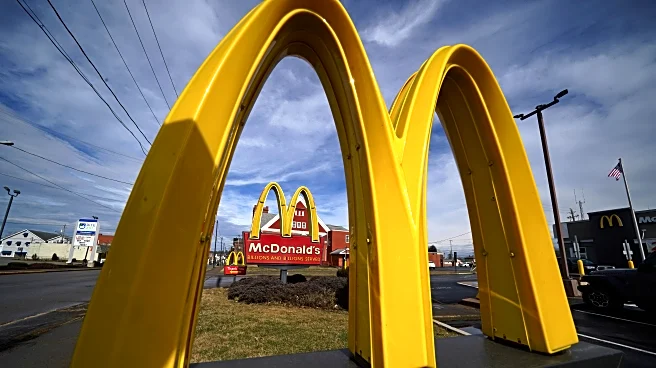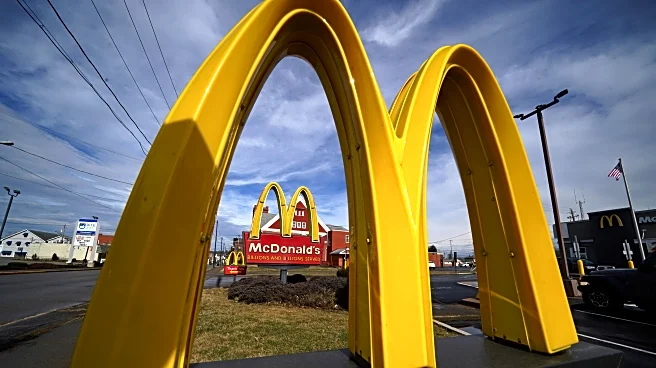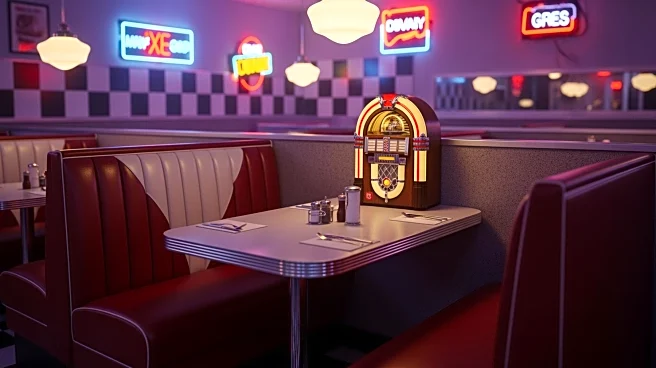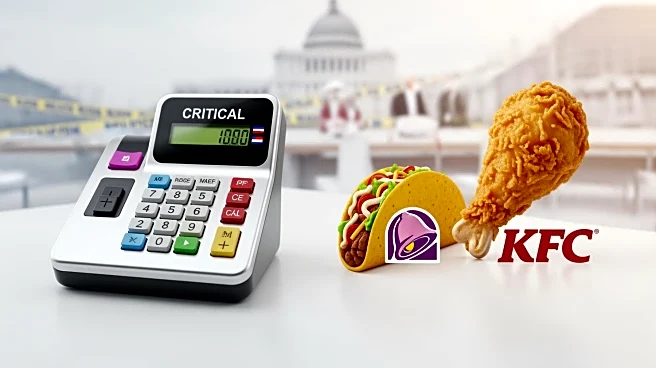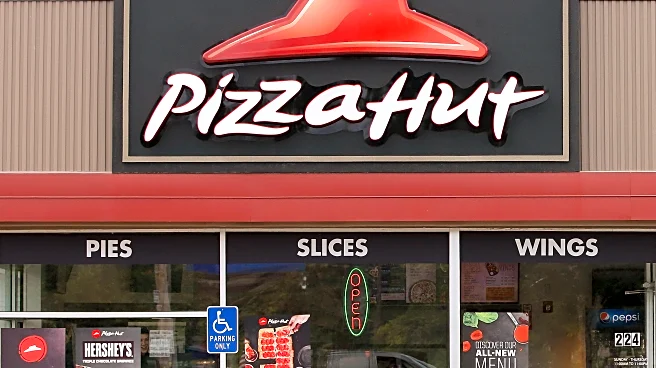What's Happening?
The casual dining sector in the U.S. is experiencing a resurgence as consumers shift their perception of value in a challenging economic environment. Chains like Chili's, Applebee's, and Olive Garden have
reported significant sales increases, with Chili's parent company noting a 21% rise in sales and a 13% increase in foot traffic. This shift is attributed to consumers seeking more value for their money, opting for table-service dining that offers higher quality food compared to traditional fast-food and fast-casual options. Meanwhile, fast-casual chains such as Chipotle and Wingstop are facing declines, with Chipotle cutting its sales outlook for the third consecutive quarter. The fast-casual segment, which caters to younger, working professionals, is particularly impacted by the economic downturn, as these consumers become more selective about their dining choices.
Why It's Important?
The shift in consumer behavior has significant implications for the restaurant industry, highlighting a change in the definition of value. Casual dining chains are capitalizing on this trend, positioning themselves as affordable yet quality dining options. This could lead to a reshaping of the industry, with casual dining gaining market share at the expense of fast-casual and fast-food segments. The economic challenges, including rising operating costs and a weakening job market, are forcing restaurants to adapt quickly. Brands that fail to adjust may face financial difficulties or ownership changes, as seen with Pizza Hut and Denny's. The evolving landscape underscores the need for restaurants to innovate and meet changing consumer expectations to survive.
What's Next?
The restaurant industry may see further consolidation and ownership changes as brands struggle to maintain profitability. Companies will likely continue to explore operational improvements and menu adjustments to attract budget-conscious consumers. The focus will be on providing perceived value through quality and service, rather than just low prices. As the economic situation evolves, restaurants will need to monitor consumer spending patterns closely and adapt their strategies accordingly. The success of casual dining chains could inspire other segments to reevaluate their offerings and marketing approaches to align with consumer preferences.
Beyond the Headlines
The current economic climate is prompting a reevaluation of what constitutes value in dining, potentially leading to long-term shifts in consumer behavior. This could influence restaurant design, menu offerings, and marketing strategies, with an emphasis on quality and experience. The industry may also see increased investment in technology to enhance operational efficiency and customer engagement. Additionally, the focus on value could drive innovation in food sourcing and sustainability practices, as restaurants seek to differentiate themselves in a competitive market.


